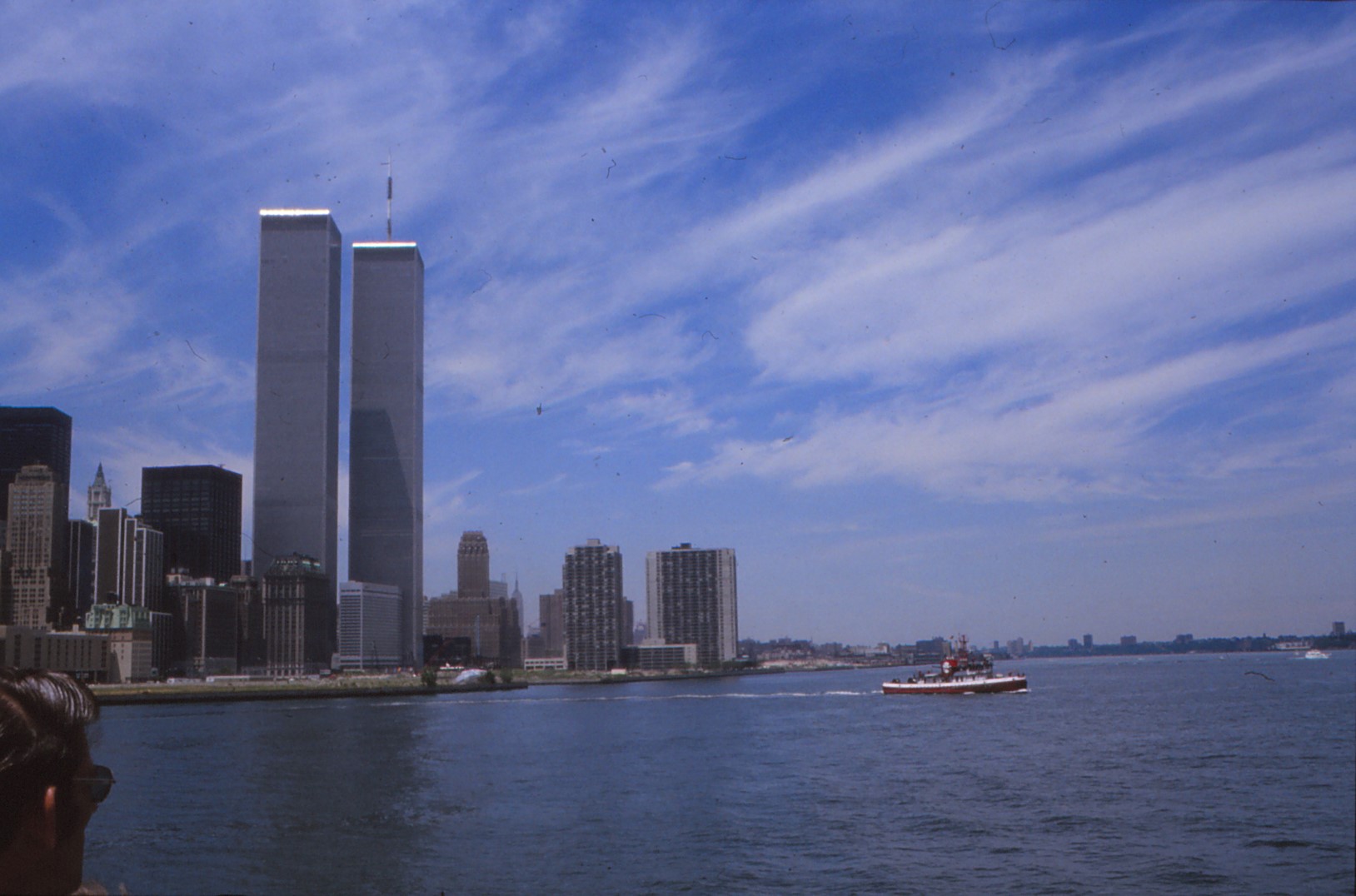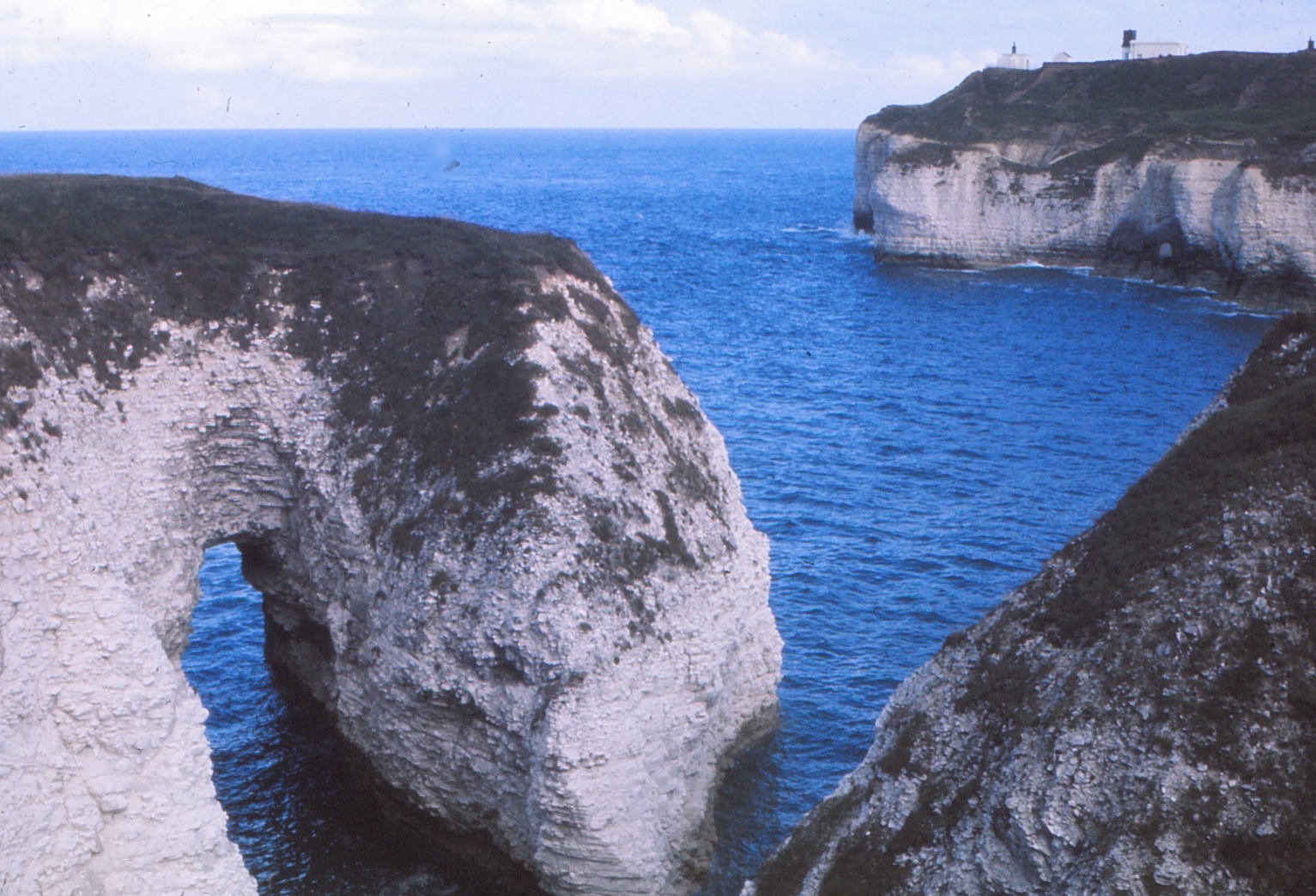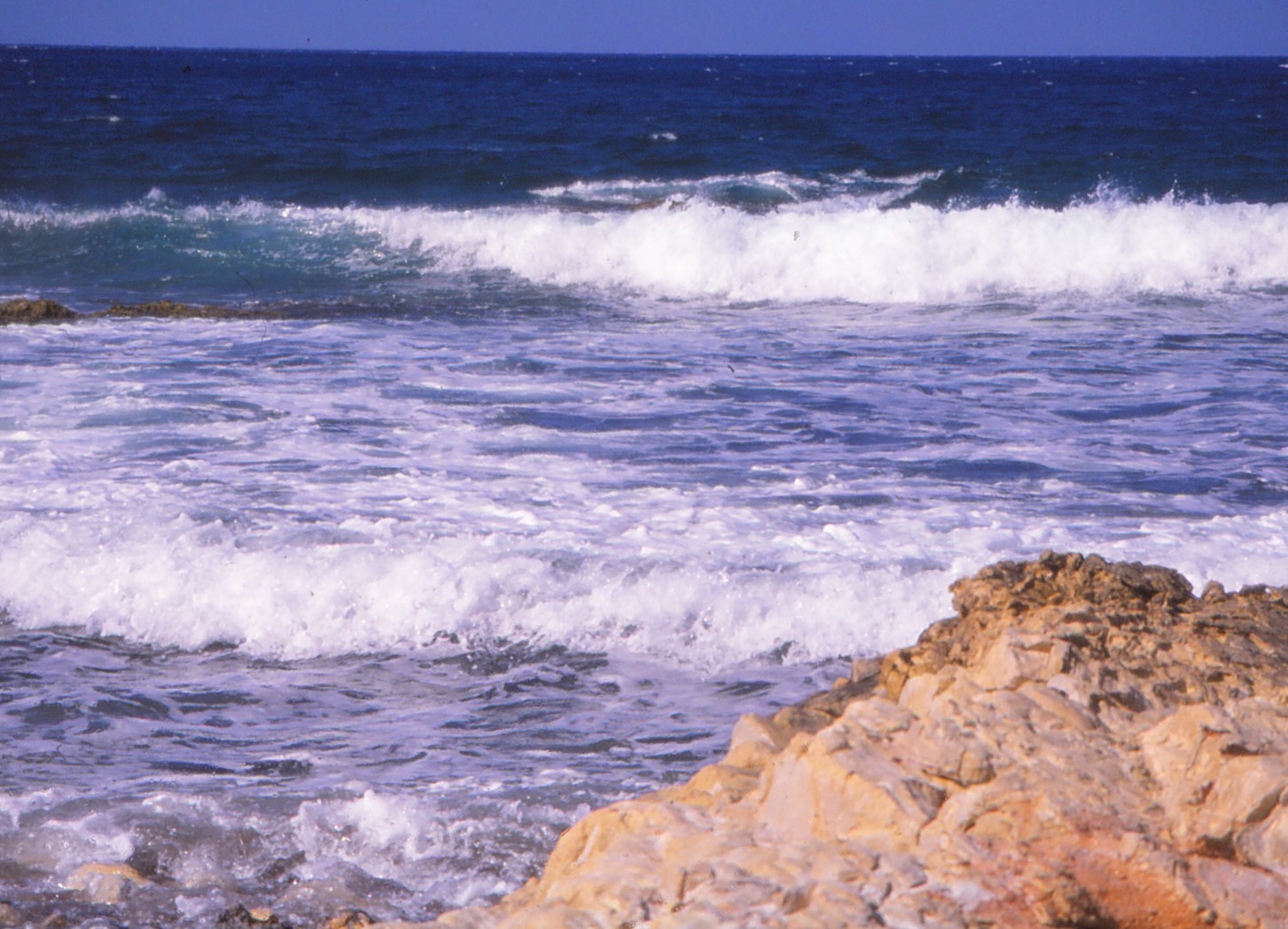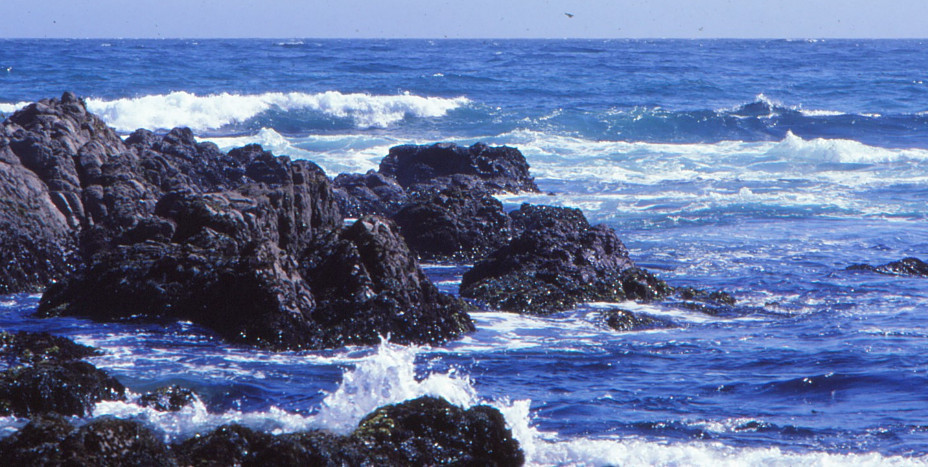An Agreement Reached on Protecting High SeasMaanantai 6.3.2023 klo 19.32 - Mikko Nikinmaa Worldwide agreement on the protection of open oceans was reached yesterday. In comparison to climate change and biodiversity protection negotiations, reaching an agreement was easy, and nobody expressed serious dissatisfaction. Not surprisingly, though, the negotiations even in this “easy” case took ten years. The reason for reaching an agreement is, however, not that governments would have become environmentally conscious, but because of the following fact. The open seas are ocean areas, which are not under the control of any nation. The maximal “economic zones” where different nations can restrict the use of the sea area are 200 nautical miles (about 370 km) from the coast. Beyond that point anyone from anywhere can use the resources of the sea and sea bottom. Thus, they belong to no nation state, but because more than 70 % of earth’s surface is ocean, form the majority of sea area. Protecting the oceans is crucial in order to combat climate change and feed world’s people. It is not generally known that oceanic algae consume about half of the carbon dioxide and produce half of the oxygen in the world. Consequently, the well-being of oceans is as important for preventing global temperature rise as preventing the rain forest loss of Amazonas. Because of aquatic pollution, which should now be decreased as the result of the agreement, oceanic photosynthesis has probably decreased by 10-15 %. People have not really cared about what happens to the open oceans before the huge plastic gyres have caught everyone’s eye. It is clear that not only plastic waste but all sorts of chemicals, including oil components are something that sea organisms encounter all the time. To my mind it is probable that the marked decrease in eel stocks, which has occurred in the last 50 years, is to a large extent caused by oceanic pollution. Because of the very strenuous spawning migration, even slight pollution can overstress the eels so that spawning becomes ineffective. At present, less than 1 % of the oceans is protected. The agreement states that by 2030 30 % of the high seas would be protected. This would enable many overfished species to recover. However, even though the actual protection of the seas is important, it is even more important that the pollutant discharge to oceans is diminished. Only that can help the high seas to stay healthy or recover. |
|
Kommentoi kirjoitusta. Avainsanat: ocean, aquatic pollution, climate change, eel, plastic pollution |
The duo living in the past (Trump and Putin) are a major threat to sustainable lifeMaanantai 19.10.2020 klo 17.50 - Mikko Nikinmaa Both Putin and Trump are anchored in the past, and hope to make decisions on 50-year old premises. Nothing can hurt the environment and, consequently, our future more than living in the past. For Trump it is the days on glorious 1960’s America, sending man to the moon. Those days American cars were the envy of every European: they were big, lean and fast. Although they used twice as much petrol as the small European cars, it did not matter, there was plenty of oil to burn. At that time the fossil fuel industry, and other industries were firmly rooted in industrialized west. There was no globalization, China and even Japan were not any commercial competitor, and the world population was 2-3 000 000 000. The world had two major powers, USA and Soviet Union. Putin still dreams that he is leading the great Soviet Union, which has always had czars. Until the time of 1917 revolution they were called czars, but Stalin and other ruthless leaders did not rule democratically. Communist Soviet Union considered environment only as a commodity for the benefit of the party. One could do whatever, change the direction of rivers, drain lakes etc. just as long as it helped the top officials of the party. With these two science-denialists in power, it is all the more important that Europe steps up. Europe’s lead with backing from China and hopefully next year from USA will be needed. The only way to get Putin change his mind is to show that his fossil fuels cannot be marketed anywhere. That’s what comes from living in the past – no decisions fitting the future. |
|
Kommentoi kirjoitusta. Avainsanat: fossil fuels, climate change, temperature, Arctic Ocean, methane |
Cod - a component of fish'n chips disappearing because of climate change?Keskiviikko 8.7.2020 klo 14.27 - Mikko Nikinmaa In an effort to introduce some physiological realism to stock assessments, Hänsel et al. (Ocean warming and acidification may drag down the commercial Arctic cod fishery by 2100; PLOS ONE, https://doi.org/10.1371/journal.pone.0231589 April 22, 2020) have modelled how some factors caused by temperature increase and ocean acidification affect traditional stock modelling of cod. Although at crude level (e.g. not taking into account any effects of aquatic pollution), the study gives sobering views. While up to the present an increase in temperature has been beneficial for recruitment, the future looks gloomier. Because of the improved recruitment until the bottom temperature reaches +5oC, cod stocks have actually increased with temperature increase. However, now the bottom temperature in most cod fisheries areas is beginning to be above that temperature, whereby further temperature increase causes reduced recruitment. Also, ocean acidification reduces recruitment. The modelling suggests that because of temperature increase and ocean acidification, cod catches, which could at present be sustainable, lead to rapid loss of cod populations by 2100. The predictions by Hänsel et al give a very strong reason, why understanding the physiology of fisheries species is imperative for planning sustainable fisheries. |
|
Kommentoi kirjoitusta. Avainsanat: stock assessment, fisheries, ocean acidification |
Physiological studies clarify how copper pollution and hypoxia affect fishTiistai 21.1.2020 klo 17.17 - Mikko Nikinmaa Two major problems in the oceans are the spreading of hypoxic areas (areas with low oxygen level) and copper pollution. The ocean deoxygenation problem is the subject of an IUCN report, downloadable from https://www.iucn.org/resources/publications, and it has been discussed also in this blog on December 13, 2019 (Deoxygenation of oceans is an increasing problem with effects on sealife). Copper pollution is caused especially because copper is a component of antifouling paints of ship hulls and boats. These paints are used to kill all organisms attaching on boats (discussed in this blog, Environmental Effects of Shipping, January 15, 2020). These two problems interact. Exposure to copper decreases tolerance to low oxygen level in fish. This is possibly due to copper causing thickening of gill epithelium, whereby oxygen transfer across the epithelium is decreased. In contrast, previous hypoxia reduces tha effects of copper on fish. This is probably due to copper effects being reduced after hypoxia-inducible factor (HIF)-dependent pathway is activated. Several studies on copper-hypoxia interactions on the functions of fish have been published from 2004 onwards (e.g. van Heerden et al. Aquatic Toxicology 69, 271-280, 2004; Fitzgerald et al Aquatic Toxicology 217, 105325, 2019; Zeng et al. Science of the Total Environment 708, 134961, 2020). They indicate how important physiological studies are for understanding, how humans affect the ocean ecosystems. |
|
Kommentoi kirjoitusta. Avainsanat: climate change, ocean acidification, metal pollution |
The Seas and Climate ChangeTiistai 22.10.2019 klo 15.57 - Mikko Nikinmaa When one talks about climate change, one quite often forgets the 75 % of earth, the seas. The seas hold 50 times the carbon dioxide that the atmosphere has, and has absorbed about 30 % of the heat that has been generated in the past decades. Further, the carbon taken up by organisms is not rapidly released to the atmosphere as happens with terrestrial decomposition, but sinks to the bottom of the sea when the organisms die. It can take thousands of years before the carbon returns to atmosphere. The seas have consequently buffered much of the anthropogenic carbon dioxide production. In fact, the cumulative human emissions starting from the beginning of Industrial Revolution represent only about a percent of the total amount of carbon within the oceans. Thus, we would not have any problem, if all the anthropogenic carbon could be absorbed in the ocean. Unfortunately, more than half of the extra production of carbo As possibilities for removing carbon dioxide with the help of oceanic properties two solutions have been advocated. Both may have undesirable ecological consequences, and should not be used. First, the growth of algae in most parts of oceans is limited by iron availability. Thus, fertilizing the water with iron salts could result in increased algal growth and removal of carbon dioxide by algal photosynthesis. The question here is that the ecosystems have evolved millions of years with low iron availability. What will a marked increase in iron availability do to the organisms in the ecosystem. Second, carbon dioxide could be pumped to deep in the oceans. At high pressures of ocean depths, carbon dioxide would remain as liquid. However, the organisms living in water above the liquid carbon dioxide will encounter hypercapnia to which they are not adapted. Again, the consequences to the ecosystem are unknown. Instead of increasing carbon dioxide removal, one should decrease its production. |
|
Kommentoi kirjoitusta. Avainsanat: carbon dioxide, ocean acdification |
Heat and Carbon Dioxide Absorption of the Seas; How Long Can it Help Us?Sunnuntai 6.10.2019 klo 17.53 - Mikko Nikinmaa Reading the IPCC Special Report on “The Ocean and Cryosphere in a Changing Climate”, a couple of things, which can have important effects, have got very little attention in the news. The news have mainly concentrated on melting ice and sea level rise, but the role of oceans hitherto taking up most of the carbon dioxide and heat can become a significant problem in the future, if it starts to reach the limit. First, the oceans have absorbed much of the heat. This may lead to the following consequences. The temperature increase and temperature variations are a major contributor to the hurricanes and typhoons, and to the increase in their strength. Further, the aggravated temperature changes in the oceans will influence the rains, their strength and predictability. The second major effect of heat uptake by the oceans is that it increases the temperature of the surface water. This, together of the melt water from the glaciers, decreases the density of surface water and increases stratification. Since mixing of water is necessary for proper oxygenation, it is no surprise that oxygen-minimum zones in oceans have recently increased in area. The lack of oxygen decreases the habitats available for fish and other marine animals. Increased stratification and decrease The absorption of carbon dioxide in the oceans acts like any other carbon dioxide sink by decreasing the amount of carbon dioxide free in atmosphere thereby decreasing temperature increase. However, an increase of temperature decreases the solubility of carbon dioxide in water. Thus, the heat absorption by the sea will decrease carbon dioxide absorption, and decrease the role of the ocean as carbon dioxide sink. In addition, carbon dioxide causes ocean acidification. Ocean acidification causes problems for all the animals with calcium carbonate shells. Calciferous shell production is made more difficult, and since the shells have carbonate, their reduced production and sinking of dead animals to sea bottom will further reduce carbon dioxide removal. In addition to effects on calcification, ocean acidification has effects on, e.g., sensory and other functions of fish (Cattano et al 2018. Living in a high CO2 world: a global meta‐analysis shows multiple trait‐mediated fish responses to ocean acidification. Ecological Monographs 88, 320-335; Esbaugh 2018. Physiological implications of ocean acidification for marine fish: emerging patterns and new insights. J. Comp. Physiol 188B, 1-13; Tresguerres and Hamilton 2017. Acid–base physiology, neurobiology and behaviour in relation to CO2-induced ocean acidification. Journal of Experimental Biology 220, 2136-2148). We have written an overview of the effects of ocean acidification on animal function (Nikinmaa M and Anttila K. 2015. Responses of marine animals to ocean acidification. In: Climate Change and Marine and Freshwater Toxins, Botana, LM, Louzao, C and Vilarino, N (eds.) De Gruyter: Berlin, pp. 99-123). |
|
Kommentoi kirjoitusta. Avainsanat: climate change, ocean acidification |
Climate change - why seas matterKeskiviikko 25.7.2018 klo 16.37 - Mikko Nikinmaa Compared to the terrestrial environment the seas contain fifty times more carbon dioxide. Further, about half of all photosynthetic carbon dioxide removal is done by oceanic organisms, mainly phytoplankton, which partly remove carbon from circulation, when they sink to seabottom after dying. An increasing temperature decreases the solubility of carbon dioxide and ocean acidification means that the equilibrium between carbon dioxide, bicarbonate and carbonate is driven towar The net result of the above is that liberation of the greenhouse gas, carbon dioxide, from the seas to the atmosphere increases simultaneously as its photosynthetic fixation decreases. Furthermore, the marine environment enters vicious circle: the higher the temperature and lower pH, the more carbon dioxide enters the atmosphere and causes further temperature increase. The well-being of the seas thus matters - also in mitigating climate change. |
|
Kommentoi kirjoitusta. Avainsanat: carbon dioxide, greenhouse gases, carbon footprint, ocean acidification |
An Important Book on Baltic SeaTiistai 18.4.2017 klo 15.50 - Mikko Nikinmaa Just recently Springer published Biological Oceanography of the Baltic Sea., edited by Pauline Snoeijs-Leijonmalm, Hendrik Schubert and Teresa Radziejewska. So if you are interested in what makes the Baltic to what it is, including what presently contaminates it, the book is worth reading. With 686 pages, and a list of prominent scientists as writers of its different chapters, it is the most authoritave work of the biology of the Baltic Sea published in many decades. |
|
Kommentoi kirjoitusta. Avainsanat: oceanography, pollution, eutrophication |

 deeply rooted in the past. When Trump says the science does not know, if there is climate change, it is only one of his 20000 lies. There is more unequivocal evidence of anthropogenic influence on the state of the environment than for any other scientific endeavour. Climate change is taken seriously by all the American industries apart from the oil and coal industries. Even most of the energy sector sees that oil and coal belong to the past: the use of renewable sources has exceeded the use of oil and coal this year. So when Trump and Pence are talking about the excellent environmental record of the present government, they are telling lies, which even the commercial circles do not accept. It is almost worse with Putin, since he does not have any opposition. For him climate change is only an opportunity. Temperature increase will make the Arctic Ocean ice-free and navigable. As a result, the huge gas deposits of Siberia are easier to utilize than hitherto. It does not matter to him that the same temperature increase, which makes the Arctic Ocean ice-free, also causes permafrost thawing and liberation of immense methane deposits to the atmosphere. Since methane is much more powerful greenhouse gas than carbon dioxide, methane liberation may lead to vicious circle speeding up temperature increase even if humans tried to restrict greenhouse gas emissions elsewhere. Not that it matters to Putin, since he is of the opinion that even if there is climate change, it is not caused by human actions.
deeply rooted in the past. When Trump says the science does not know, if there is climate change, it is only one of his 20000 lies. There is more unequivocal evidence of anthropogenic influence on the state of the environment than for any other scientific endeavour. Climate change is taken seriously by all the American industries apart from the oil and coal industries. Even most of the energy sector sees that oil and coal belong to the past: the use of renewable sources has exceeded the use of oil and coal this year. So when Trump and Pence are talking about the excellent environmental record of the present government, they are telling lies, which even the commercial circles do not accept. It is almost worse with Putin, since he does not have any opposition. For him climate change is only an opportunity. Temperature increase will make the Arctic Ocean ice-free and navigable. As a result, the huge gas deposits of Siberia are easier to utilize than hitherto. It does not matter to him that the same temperature increase, which makes the Arctic Ocean ice-free, also causes permafrost thawing and liberation of immense methane deposits to the atmosphere. Since methane is much more powerful greenhouse gas than carbon dioxide, methane liberation may lead to vicious circle speeding up temperature increase even if humans tried to restrict greenhouse gas emissions elsewhere. Not that it matters to Putin, since he is of the opinion that even if there is climate change, it is not caused by human actions. n dioxide by humans remains in the atmosphere. Further, the changes occurring in the seas decrease its effectiveness in buffering carbon dioxide loads, and the carbon dioxide uptake itself causes ocean acidification with difficult problems for oceanic organisms. Coral bleaching is the event that has received most attention as a result of climate change, but all the animals with calciferous shell (shell composed mainly of calcium carbonate) are increasingly having problems in shell formation as the oceans are cidified. This decreases the removal of carbon from the atmosphere, as dead invertebrates with calcium carbonate shells sink to the bottom of the sea, whereby the carbon is removed from atmospheric circulation for thousands of years. Ocean acidification also causes sensory problems for fish; the ecological consequences of this are not known. Another major problem associated with the seas is that the solubility of garbon dioxide decreases with increasing temperature. Thus, the water in temperate areas can hold much more carbon dioxide than tropical seas – this can be seen as a good feature, as temperate areas have produced most carbon dioxide, which has partially been absorbed by the ocean. However, the problem with climate change is that the sea water temperature increases everywhere, and consequently the ability of water to absorb carbon dioxide decreases. This can speed up temperature increase by increasing the amount of carbon dioxide left in the atmosphere, and cause a vicious circle: temperature increase results in less carbon dioxide contained in the water, consequently temperature increases further and decreases the carbon dioxide holding capacity. Also, the (mainly microscopic) algae of the oceans account for approximately half of the photosynthetic carbon dioxide fixation. The removal of carbon dioxide by algae has decreased by 10-20 % during recent years, probably because of aquatic pollution. This also contributes to climate change, and about as much as the recent changes in forestation.
n dioxide by humans remains in the atmosphere. Further, the changes occurring in the seas decrease its effectiveness in buffering carbon dioxide loads, and the carbon dioxide uptake itself causes ocean acidification with difficult problems for oceanic organisms. Coral bleaching is the event that has received most attention as a result of climate change, but all the animals with calciferous shell (shell composed mainly of calcium carbonate) are increasingly having problems in shell formation as the oceans are cidified. This decreases the removal of carbon from the atmosphere, as dead invertebrates with calcium carbonate shells sink to the bottom of the sea, whereby the carbon is removed from atmospheric circulation for thousands of years. Ocean acidification also causes sensory problems for fish; the ecological consequences of this are not known. Another major problem associated with the seas is that the solubility of garbon dioxide decreases with increasing temperature. Thus, the water in temperate areas can hold much more carbon dioxide than tropical seas – this can be seen as a good feature, as temperate areas have produced most carbon dioxide, which has partially been absorbed by the ocean. However, the problem with climate change is that the sea water temperature increases everywhere, and consequently the ability of water to absorb carbon dioxide decreases. This can speed up temperature increase by increasing the amount of carbon dioxide left in the atmosphere, and cause a vicious circle: temperature increase results in less carbon dioxide contained in the water, consequently temperature increases further and decreases the carbon dioxide holding capacity. Also, the (mainly microscopic) algae of the oceans account for approximately half of the photosynthetic carbon dioxide fixation. The removal of carbon dioxide by algae has decreased by 10-20 % during recent years, probably because of aquatic pollution. This also contributes to climate change, and about as much as the recent changes in forestation. in temperature difference between tropical and polar areas will also reduce the generation of water currents, e.g. the Gulf stream, which partially maintains the favourable climate of Europe. Finally, if the heat capacity of oceans is exhausted, for the same amount of heat energy an increase of air temperature becomes larger.
in temperature difference between tropical and polar areas will also reduce the generation of water currents, e.g. the Gulf stream, which partially maintains the favourable climate of Europe. Finally, if the heat capacity of oceans is exhausted, for the same amount of heat energy an increase of air temperature becomes larger. ds carbon dioxide. Further, the pollution of the seas has resulted in reduced photosynthesis despite eutrophication in some areas.
ds carbon dioxide. Further, the pollution of the seas has resulted in reduced photosynthesis despite eutrophication in some areas.